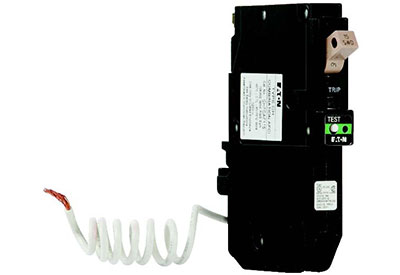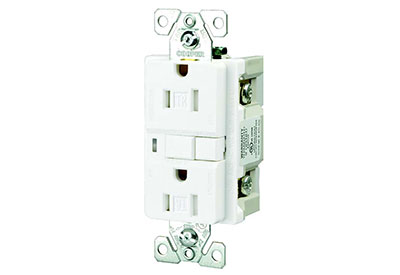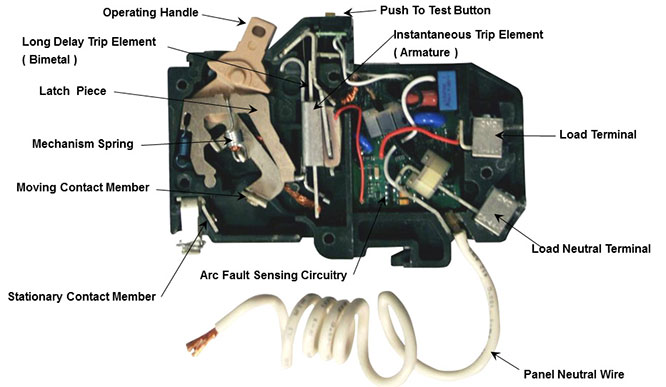Comprendre les exigences du Code canadien de l’électricité 2015 sur les défauts d’arc

Geoff Reed, Vladimir V. Gagachev et Michael Hurd
Qu’est-ce qu’un défaut d’arc?
Un défaut d’arc est un arc électrique provoqué par le courant circulant dans un trajet non planifié. La formation d’arcs électriques cause une chaleur excessive qui peut rapidement mettre le feu dans les matériaux à proximité, comme les charpentes de bois ou les matériaux d’isolation, provoquant un feu. Les causes les plus typiques des défauts de l’arc sont :
La formation d’arcs peut résulter d’une installation électrique ayant subi des dommages comme :
– Des fils qui auraient été accidentellement percés par des clous ou des vis.
– Des câbles qui auraient été brochés contre des charpentes de murs
– Des animaux ou rongeurs qui ont grugé l’isolation des câbles ou des fils
– Des pressions dues à la chaleur, l’humidité ou la puissance
La formation d’arcs à des points de connexion lâches ou dans les prises
La formation d’arcs dans les appareils électro-ménagers ou les cordons de rallonge
Des cordons pliés, arqués ou usés
Des cordons sous les meubles ou derrière ceux-ci.
Pour mieux comprendre les interrupteurs de circuits pour défauts d’arc et les normes pour prévenir l’amorçage d’arcs électriques, lire l’article …
Arc-fault circuit interrupters
Today’s arc-fault technology, available in both circuit breaker and receptacle form, has been proven via the use of arc-fault circuit breakers, saving lives and property as an industry standard for more than 15 years. The technology has gone through several iterations to reduce unwanted tripping due to non-hazardous arcs that are part of the normal opera¬tion of appliances and devices in the home.
Both AFCI circuit breakers and receptacles are designed to detect both series and parallel arcing con¬ditions. However, an AFCI receptacle will not protect against parallel arcing upstream of the device as the current path does not flow through the AFCI recep¬tacle. A combination AFCI circuit breaker will protect the entire circuit.


Understanding the 2015 Canadian Electrical Code provisions
In simplified terms, arc-fault circuit protection is required in 125Vac, 15A and 20A circuits supplying receptacles throughout the home with the exception of those outlined in the 2015 CE Code. Be reminded that en¬forcement and interpretation of the code is up to the discretion of the local inspection authority having jurisdiction (AJH).
The new Rule 26-724(f) of the 2015 Canadian Electrical Code requires all branch circuits in dwelling units supplying 125V receptacles rated 20A or less to be protected by a Combination-Type arc-fault circuit interrupter (AFCI), except that branch circuits supplying receptacles installed in accor¬dance with Rules 26-710 (f) and 26-712(d) (i), (iii), (iv) and (v), and those supplying only one receptacle for the connection of a cord-connected sump pump, are exempt from the requirement for arc-fault protection.
A combination-type AFCI is defined in the new Rule 26-720 as a device that provides both series and parallel arc-fault protection to the entire branch circuit wiring, including cord sets and power sup¬ply cords connected to the outlets, against the unwanted effects of arcing.
Outlet branch-circuit-type arc-fault circuit interrupter
Rule 26-720 also defines an Outlet Branch-Circuit-Type AFCI — a device that provides both series and parallel arc-fault protection to downstream branch circuit wiring, cord sets, and power supply cords against the unwanted effects of arcing and also provides series arc-fault protection to upstream branch circuit wiring. The new CE Code Rule 260724 (g) allows the use of an Outlet Branch-Circuit Type arc-fault circuit interrupter (OBC AFCI) instead of the Combination circuit breaker type required with Rule 26-724 (f), provided that the OBC AFCI is installed at the first outlet on the branch circuit and the wir¬ing method for the portion of the branch circuit between the branch-circuit overcurrent device and the first outlet comprises metal raceway, armoured cable, or non-metallic conduit or tubing.
The reason behind the added mechanical protection is that the OBC AFCI does not provide parallel arc-fault protection to the upstream branch circuit wiring. The mechanical protection is to minimize the risk of direct contact and damage to the circuit conductors that could cause arcing and ignition, and to localize the flames should ignition occur.
Diagram: A look inside an AFCI circuit breaker

See EIN Calendar for upcoming dates of 2015 Canadian Electrical Code Essentials.
Read more about Arc Fault:
– Changements dans le Code canadien de l’électricité
Geoff Reed is Product Manager, Residential Power Distribution & Metering Products, Eaton Industries (Canada) Company, Power Distribution Operations; GeoffReed@Eaton.com. Vladimir V. Gagachev is Manager, Codes & Standards, Electrical Sector, Eaton Industries (Canada) Company; VladimirVGagachev@Eaton.com. Michael Hurd is District Manager, Eaton Residential & Wiring Device Division (RWDD); MichaelHurd@Eaton.com.









